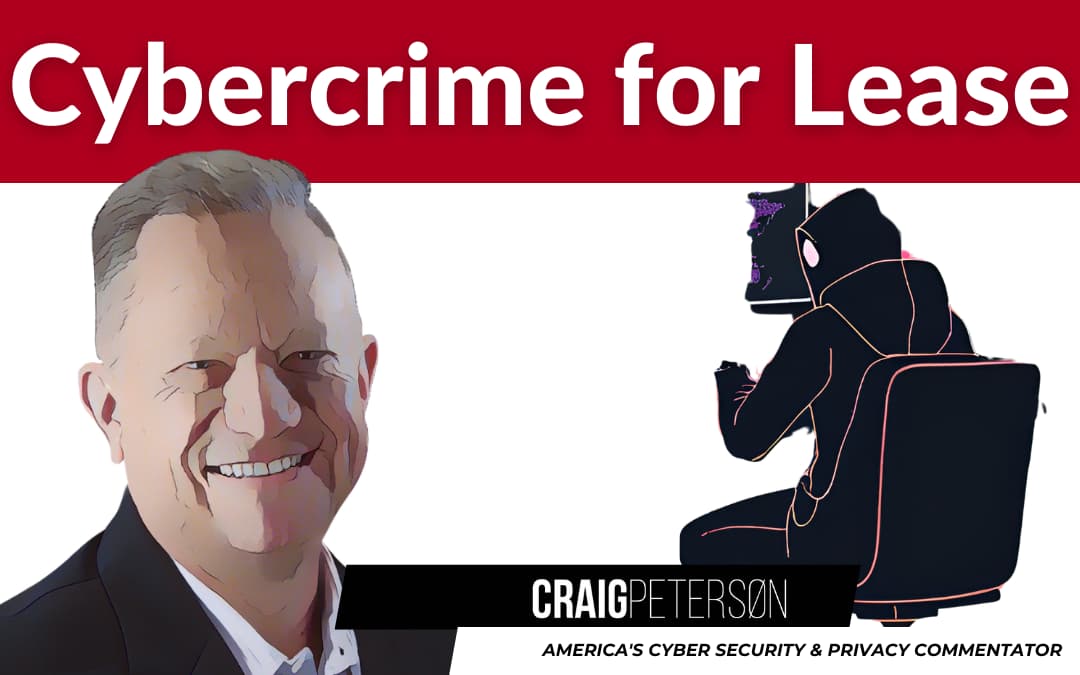You Got Hacked By… A Subscription Service?! Understanding Ransomware as a Service (and Not Losing Your Shirt!) 👕
Hey folks! Ever hear of Ransomware-as-a-Service (RaaS)? Sounds kinda techy, right? Don’t sweat it! Think of it like Netflix, but instead of binge-watching “Stranger Things,” these hosers are renting tools to steal your stuff! 😱
Yeah, it’s that serious. So grab a coffee (or a Sam Adams, I ain’t judgin’), and let’s break down this crazy new trend in cybercrime, and more importantly, how you can protect your hard-earned business! #Cybersecurity #Ransomware #SmallBiz
RaaS: The “Evil Empire” of Cybersecurity
Okay, so what exactly is RaaS infrastructure? Well, imagine a bunch of criminals selling ready-to-go ransomware kits. They handle the complicated tech stuff, and other, less skilled hosers (the “affiliates”) rent these kits to attack businesses like yours. These affiliates get a cut of the ransom, and the kit creators get the rest. It’s like a really messed-up franchise agreement. 💰
Think of it this way: it’s like buying a franchise for a fast-food restaurant, except instead of selling burgers, you’re selling digital misfortune! They provide the ransomware payload (the actual nasty program that locks up your computer), the command and control (C2) servers(where they boss around the infected computers), and access through shady dark web portals.
They even handle the yucky bits, like payment and negotiation systems (usually Bitcoin or Monero, because, ya know, they don’t want the cops tracing the money!) and victim data leak sites (where they threaten to post your company secrets if you don’t pay up).
Real-Life Example: Imagine Joe’s Pizza. Joe, a hardworking guy, barely knows how to use email. Suddenly, his computer flashes a scary message: “PAY UP OR LOSE EVERYTHING!” He can’t access customer orders, employee information, or even the ingredients list! Joe just got hit by RaaS, and he didn’t even see it coming. 🍕
That’s RaaS for ya! It’s the ultimate example of how tech can be both amazing and scary!
How These Hosers Operate: The RaaS Playbook
How do these hosers pull it off? Let’s run through the RaaS playbook:
- Affiliate Registration: The budding criminal hacker signs up via some dark web forum—think Craigslist, but for cybercrime.
- Access to Malware: The villain gets their ransomware kit! They can customize it with logos and tailored requests.
- Attack Execution: The affiliate sends out infected emails, exploits some security hole, and lets the ransomware do its dirty work.
- Ransom Collection: The attacked are asked for the ransom amount through untraceable means, such as by using cryptocurrency.
- Revenue Sharing: The big boss (RaaS operator) takes their cut (think 20-40%), and the affiliate gets the rest. It’s like affiliate marketing, but with way worse consequences!
Real-Life Example: Remember the Colonial Pipeline attack in 2021? That was a biggie, and it was linked to a RaaS group called DarkSide. A single point of weakness allowed them to infect the system. People were panic buying gas! ⛽
Why RaaS Is More Dangerous Than a Flock of Angry Seagulls
Okay, why should you care about RaaS? Here’s the lowdown on why it’s so dangerous:
- Low barrier to entry: You don’t need to be a super-genius hacker anymore. Anyone, even your wacky cousin Vinny, can launch an attack with a little bit of research and the right RaaS tools.
- Highly scalable: These hosers can hit thousands of companies like yours simultaneously. It’s like a mass spam email campaign, but instead of selling fake watches, they’re holding your data hostage.
- Evolving tactics: RaaS creators are constantly updating their tools and adding new features. It’s like a software update from hell!
I think the evolving tactics are the worst part since it is tougher to detect these attacks!
Defending Your Business From the RaaS Menace: No More Mr. Nice Business Owner!
Alright, enough doom and gloom! Let’s talk about how you can protect your business from these digital pirates. Here’s some advice for business owners who could use a little tech support.
- Zero Trust Architecture: This is a fancy term, but the idea is simple: don’t trust anyone inside or outside your network. Verify everything! Restrict access to sensitive data to only those who absolutely need it.
- Advanced Endpoint Security: Invest in a solid Endpoint Detection and Response (EDR) or eXtended Detection and Response (XDR) solution. I cannot stress this enough! An EDR reviews your endpoints and will help detect anything that might be a vulnerability, such as an outdated operating system. This software is like a security guard for your computers, constantly monitoring for suspicious activity. Remember, prevention is better (and cheaper!) than cure!
- Regular Backups: This is your lifeline! Back up your data regularly – both on-site and off-site, and make sure those backups are immutable. If your data is compromised, you can always restore from a clean backup!
- Employee Training: This is HUGE! Train your employees to spot phishing emails and other scams. Use a little humor when teaching them—they’ll be more likely to remember! Tell them to think before they click!
- Incident Response Plan: Have a plan in place before an attack happens. This is like a fire drill for your business. Know who to call, what steps to take, and how to communicate with your customers and employees.
- Password Management: Please, please, please use a password manager like 1Password! No more writing passwords on sticky notes or using “password123”! A password manager generates strong, unique passwords for each website and app, and securely stores them. All you have to remember is one master password.
- Two-Factor Authentication (2FA) or Multi-Factor Authentication (MFA): Turn on 2FA/MFA wherever possible. This adds an extra layer of security by requiring a second verification method (like a code from your smartphone) in addition to your password. Ditch those text messages since they are vulnerable and try Duo’s tool.
- DNS-level Protection: Consider using DNS-level protection like OpenDNS or Cisco Umbrella for your business. These tools block access to malicious websites and prevent malware from communicating with command-and-control servers. If you’re a Windows user, Windows Defender is a solid, free option.
Real-Life Example: A friend of mine, let’s call him “Mark,” runs a small accounting firm. He ignored these warnings, thought he was too small to be a target… and BAM! Ransomware attack! He lost weeks of work, paid a hefty ransom, and learned a very expensive lesson.
Aha! Moment: See how these tips are applicable to your daily life as well? They don’t just protect your business, but also your personal information!
Time to Protect Your Business from Cybercrime! ⏰
Ransomware-as-a-Service is no joke, folks! It’s a serious threat that can cripple your business. But by taking the right precautions, you can protect yourself and your livelihood. So, let’s do the following:
- Go through these steps with your IT team and ask them to implement them if they haven’t already.
- Share this information with friends.
- Start to change your habits today!
Stay safe out there, and remember, knowledge is power!
Sign up for free weekly emails at CraigPeterson.com! #RaaS #CybersecurityTips #SmallBusinessSecurity #ProtectYourBusiness.


